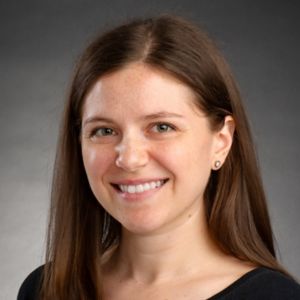St. Jude Family of Websites
Explore our cutting edge research, world-class patient care, career opportunities and more.
St. Jude Children's Research Hospital Home

- Fundraising
St. Jude Family of Websites
Explore our cutting edge research, world-class patient care, career opportunities and more.
St. Jude Children's Research Hospital Home

- Fundraising
Are scientific citations meaningful? Scientific progress from a larger perspective

Scientific citations recognize meaningful research. Being a part of a highly cited lab means that the research answers important questions that drive research forward.
Scientific citations recognize work that influences the direction of the field of research. I am a postdoctoral fellow in the lab of Charles Mullighan, MBBS (Hons), MD, who is one of 19 St. Jude scientists who are on the 2020 list of Highly Cited Researchers. This peer recognition is a way to identify work valuable to the community as a whole. While it wouldn’t mean much to someone who isn’t in research, it is exciting to know the research community views your lab’s work as important, and to see that it has impacted other’s work as well.
Professional popularity or moral imperative
As a passive participant in science social media, I can say there is a lot of discussion on whether citations are meaningful. Many of us in labs can feel sometimes as if we work in a vacuum. But when we step back and realize we’re among thousands of researchers working on similar and complementary things, we should also think about scientific progress from a larger perspective, and this is where being a highly cited researcher gains more meaning.
According to Clarivate, a London firm that publishes the Highly Cited Researchers list, more than 6,000 researchers representing 21 fields of science and social sciences were named as people whose influence crosses several fields based on high-impact publications. The list is based on publications scientists produced between 2009 and 2019 that ranked in the top 1% by citations for their field and publication year in the Web of Science citation index. The 2020 list includes St. Jude researchers working in a dozen departments and research centers.
What does it mean to be a part of a highly cited lab?
It’s a great achievement. It reflects a well-established research program based on seeking answers to important questions that move the field forward. Dr. Mullighan’s leukemia research is set apart because our genomic discoveries allow us to take a deep dive to investigate how and why these mutations drive this disease, allowing us to pursue a more complete understanding of leukemia biology and how it may respond to different types of treatment.
In fact, these findings have begun to change the way leukemias are diagnosed and characterized. They benefit every researcher in the field – reflected in the high number of citations Dr. Mullighan’s publications receive.
Working in a highly cited lab
Lineage ambiguous leukemias, a high-risk subtype of acute leukemia, are difficult to diagnose, classify and treat. A few years ago, Dr. Mullighan’s lab published the largest genomics study to date of pediatric mixed phenotype acute leukemia (MPAL), a subtype of lineage ambiguous leukemia, which identified the WT1 gene as one of the most mutated genes in MPAL. More recently, a large pan-acute leukemia analysis identified BCL11B de-regulation as a second highly recurrent genomic alteration in MPAL and other lineage ambiguous leukemias. My work focuses on understanding how the alteration of these transcription factor genes drives lineage ambiguous leukemia. We can then begin to develop therapies that more efficiently target this high-risk group. Our lab environment is highly collaborative. While each researcher has a specific focus, we use similar techniques and approaches. A broad mix of experience also provides a rich learning and teaching environment.
One of the most rewarding aspects of my fellowship so far has been learning a whole new area of biology – new experimental approaches, new paradigms to ponder and new challenges to investigate. Being a part of a highly-engaged and cited lab is rewarding, even more so because we have the freedom to explore our own ideas and take full advantage of all the resources available.






